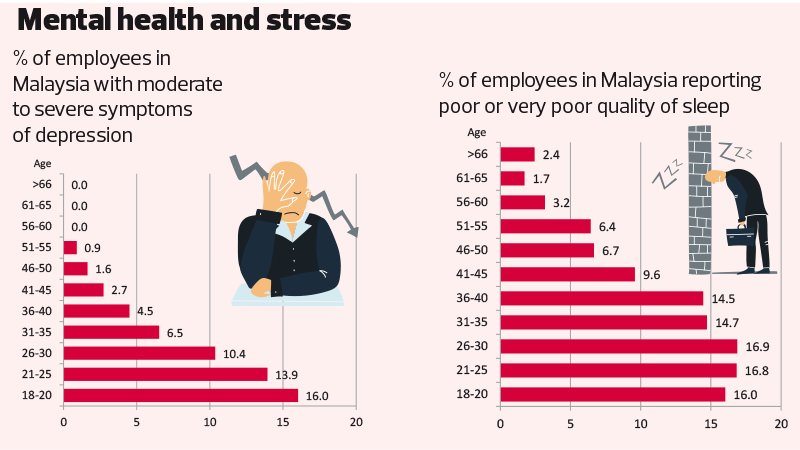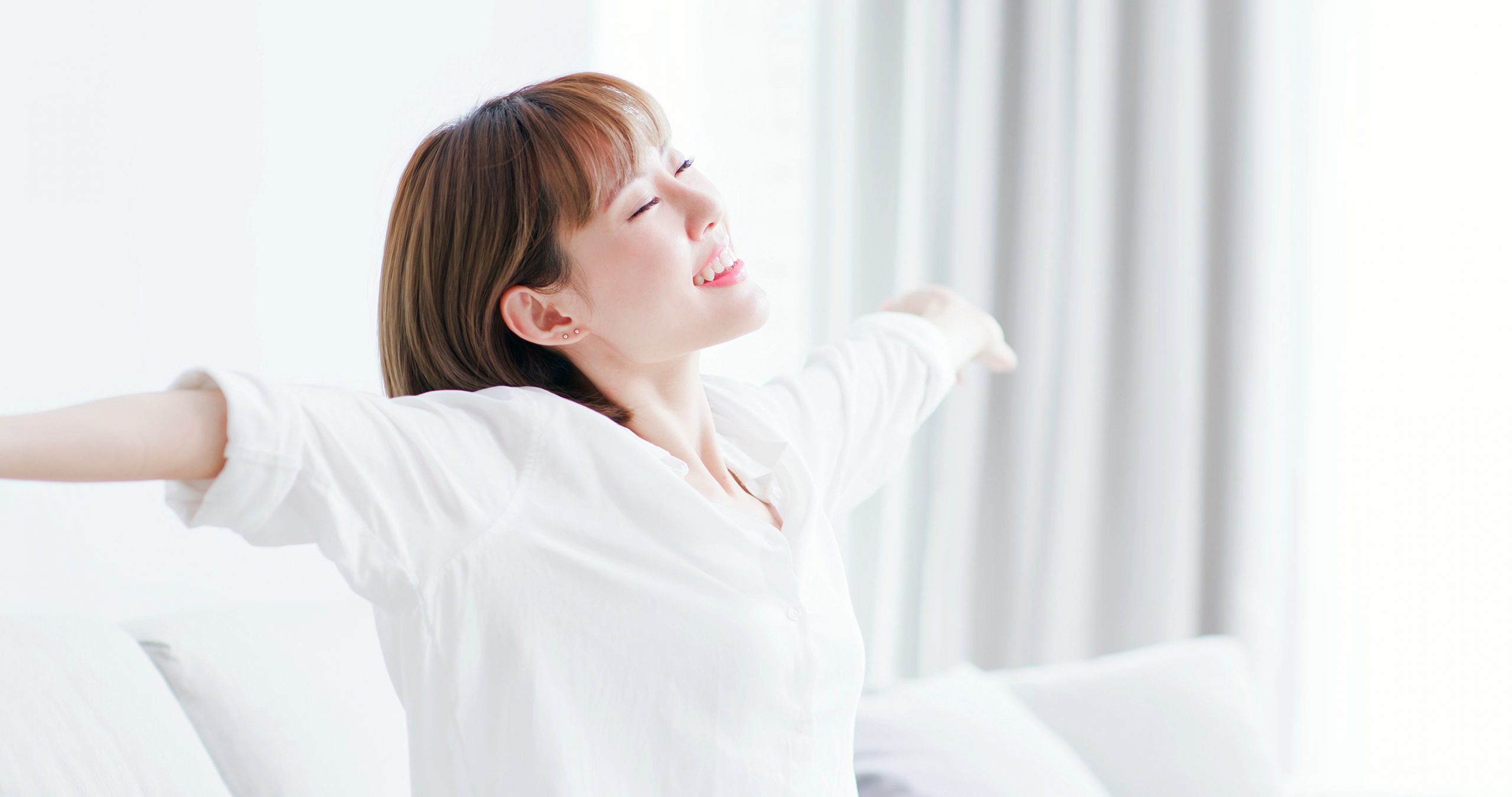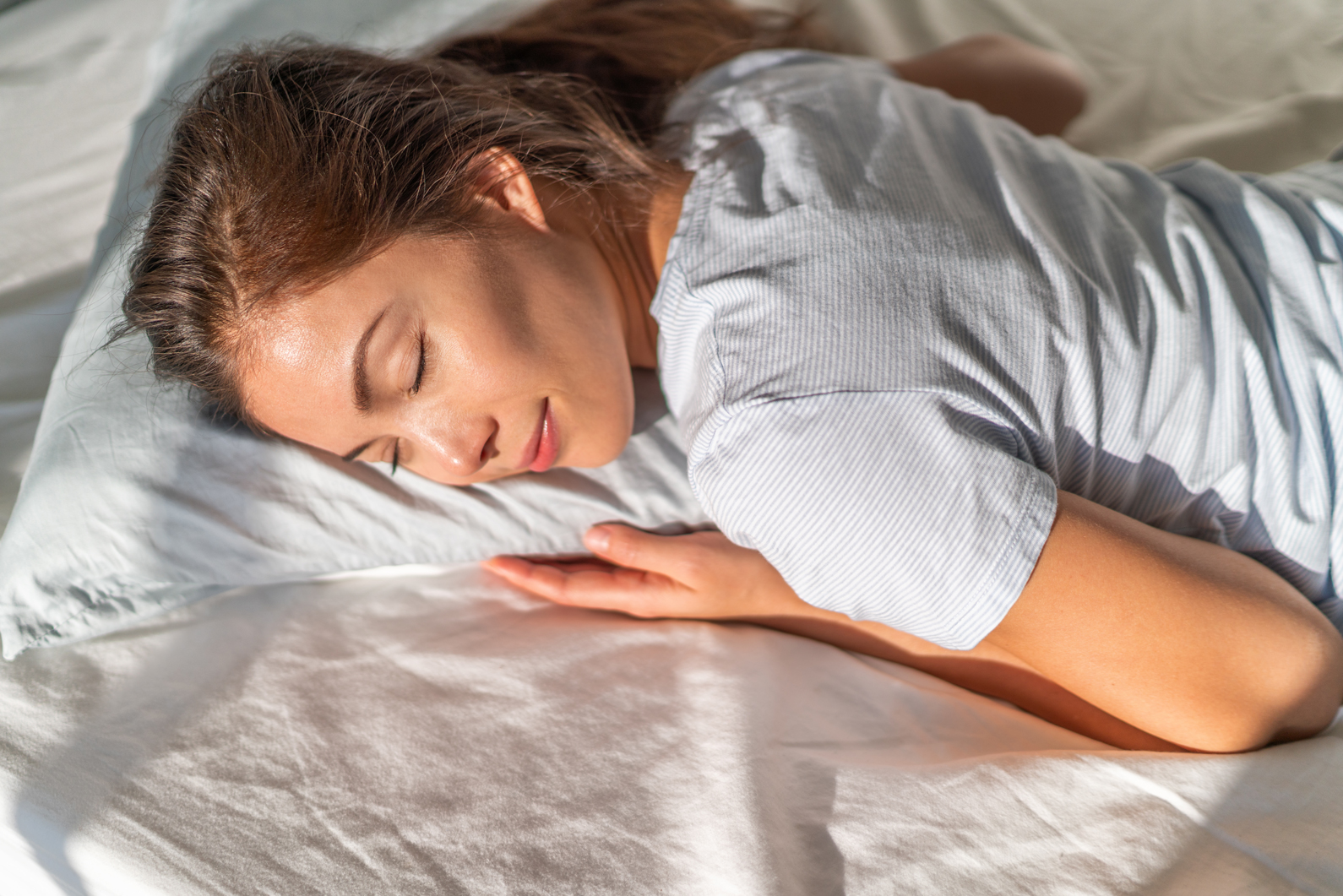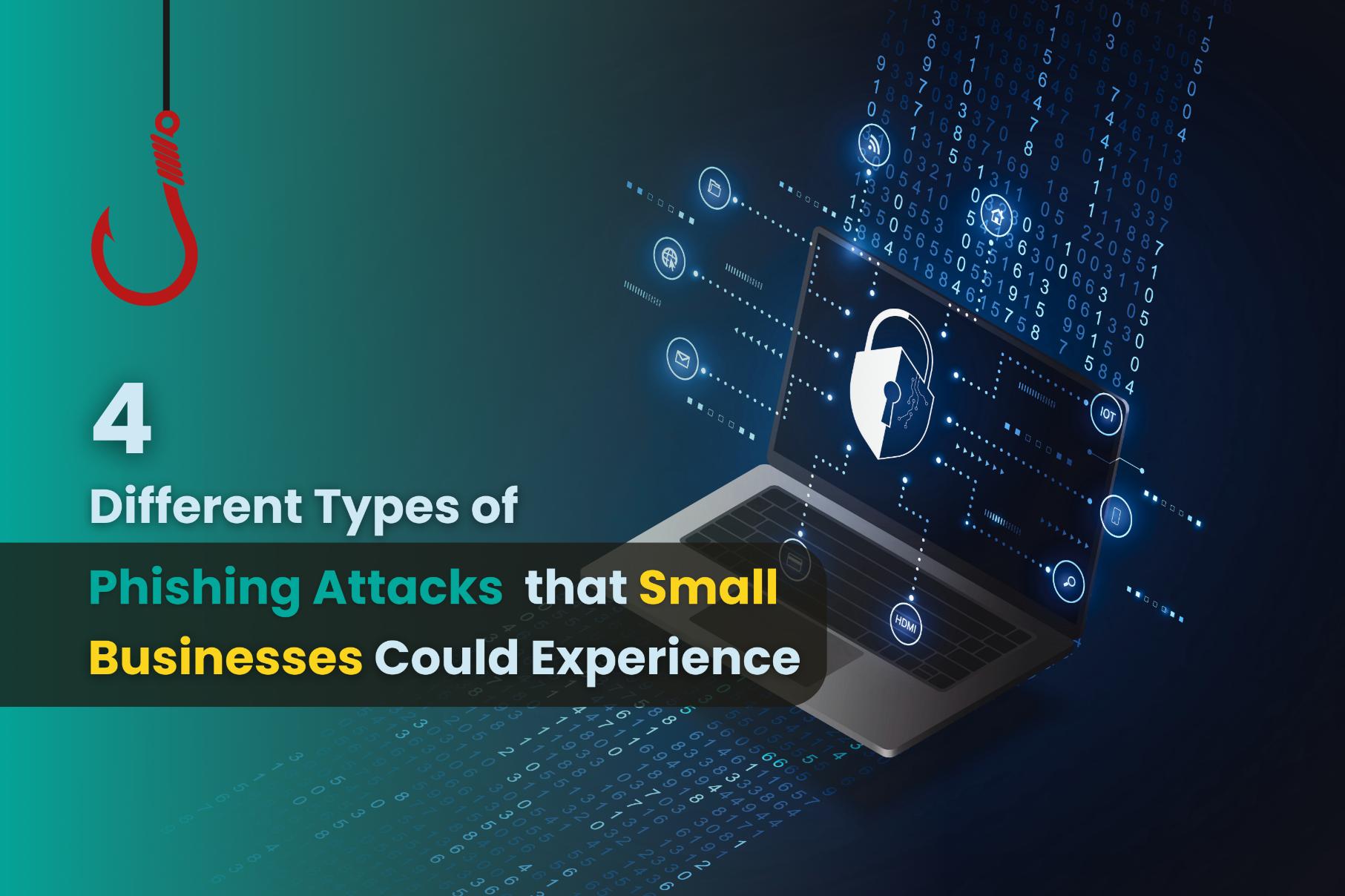4 Calmer Ways to Take A Break From the Everyday Hustle

Words by Celeste Goh
- A recent survey shows that 1-in-10 Malaysian employees are going through anxiety or depression
- The always-on, always-connected lifestyle is the main contributor to this high number
- Breathing exercises and yoga can help detach from the digital world
- Meditation and enough sleep are proven restorative methods for mental health
As the year 2020 draws to a close in the next few weeks, we would say that it is perfectly normal if you feel a little heavy in the head; modern urban life is stressful as it is, even without the ongoing pandemic that has so rashly entered our lives this year.
Last year, Malaysia’s Healthiest Workplace by AIA Vitality, the first science-backed survey commissioned by AIA, has shown that out of the 17,595 employees polled, with the bulk of them aged 18 to 40: 51% of them suffer from work-related stress, whereas 53% of them get less than seven hours of sleep each night. On top of that, 7% of them experience moderate to high levels of anxiety or depressive symptoms – that’s one out of 10 Malaysian employees going through anxiety or depression, with most of them being millennials (those born between 1981 and 1996).

The American Psychological Association has revealed in their annual survey that millennials in the US were the most stressed-out generation, as CEO of SuperFriend Margo Lydon confirms: “Traditionally, work-related challenges for young people were often about building careers, and this is no different from any other generation. Except that, in 2020, we have a more globally connected world that is moving at a much faster pace, with greater levels of social, political and economic uncertainty, plus increased expectations of productivity, which often mean longer hours and increased work stress.”
Not only that, Dato’ Dr Andrew Mohanraj, President of the Malaysian Mental Health Association concurs that millennials are also synonymous with the digital boom: “Being more connected and, ironically, more isolated from the real world, being exposed to cyber bullying, with little opportunity for real interaction, or having limited actual interactions – all these have a negative impact on one’s ability to handle stressful situations.”
“What is ordinarily not deemed to be stressful may seem like a psychologically overwhelming situation to millennials, who are immersed in the digital world,” he adds. “Burnout and depressive symptoms are not issues that can be taken lightly, as they may lead to more serious issues, such as suicidal behaviour.”
“We need to check in with ourselves periodically to find out how we are doing,” says April Kuan, yoga instructor and wellness practitioner. “We don’t pause enough. We’re always so busy constantly, and we’re always up in our heads thinking: what we need to do the next day, or in the next hour; what we haven’t done yet, or what we’re falling behind on; or what we did yesterday that we shouldn’t have done… We’re always constantly thinking, thinking, thinking – and when you’re thinking too much, that’s when you get stressed.”
That’s why this week, we’re checking in with April again, to find out the subtler ways to take a break from the everyday hustle – to stop whatever we are doing even just for a minute or two, to #lookup and enjoy where you are, and be conscious of where you are, even if it’s within the confines of your own home!
“While it is sometimes daunting to have to always constantly work at trying to be happy, it’s a practice that we have to just keep doing it every day diligently, and understand that this is part and parcel of taking care of ourselves,” April adds.
“It’s like what the late Micheal Jackson said: look into the man in the mirror first, before you can change. If you’re not good in here, your life outwards will never be good, and the easiest way to change your life is to change yourself, because you know yourself the best.”

Breathe
That’s it, folks – just breathe! While it’s an everyday, autonomous occurrence to us, we don’t actually pay attention to our breathing – mainly because it’s automatic to any living being. In fact, even though it’s the easiest thing to do, not a lot of people want to do just that, putting aside some time to just breathe.
“When we actually sit down, close our eyes, and really just focus on breathing, it actually makes a whole lot of difference,” April says. “Just that pause at the end of the day is enough – take a few breaths, and not think about work for a while. When you come back to it, you will find that you are calmer.”
India Times have reported that “breathing correctly is important for your overall well being, and by taking just a few moments each day to practise some deep breathing exercises can decrease stress, relax your mind, body and can help you sleep better.”
From improving your blood flow, body immunity and digestion; to reducing inflammation, stimulating the lymphatic system, and detoxifying the body – deep breathing relaxes the mind and body, as well as calms down anxiety: “When you are angry, tensed or scared, your muscles are tightened and your breathing becomes shallow. Your breathing constricts, and your body cannot get the amount of oxygen it requires,” India Times says. “Deep breathing reverses this process, and it slows down your heart rate, allowing the body to take in more oxygen, and ultimately signals the brain to wind down.”
Practise Restorative Yoga
Besides the physical benefits of practising yoga, which April has shown us last week, she also mentions that “the real reason for practising yoga is to prepare the body for meditation.”
Meghan Johnston of Yoga Medicine has also said that “restorative yoga not only allows us to relearn the art of relaxation, while developing the skills and abilities to self-soothe, but also enhances our healing capacity through helping us regulate the stress response and re-balance the nervous system.”
Johnston states that restorative yoga can help strengthen our ability to move between states of stress and rest with more ease, by reconnecting with our parasympathetic nervous system – a branch of our autonomic nervous system that controls involuntary functions in the body, like our heart rate.
She adds: “When we are in states of stress, or what is often termed “fight or flight,” we are in an elevated sympathetic state. In contrast, during periods of rest and recovery, we are in an elevated parasympathetic state.”
One of the restorative yoga poses you may look into is the Legs Up the Wall Pose (Viparita Karani), which as the name implies, you lie on the ground with your legs up on the wall for about 10 to 15 minutes. You may have a pillow underneath your lower body for additional support, or open up the hips by opening and closing your legs.
“If you just have too much in your head, and you just need to calm down, anything that gets your legs higher than your head is recommended for anyone feeling overwhelmed with stress,” April says.
On the other hand, the Child’s Pose (Balasana) is another restorative yoga pose you may try out: from a kneeling position, bring the forehead to the floor, and relax the arms alongside the body, with the palms facing upwards.
“When you feel overwhelmed or stressed, anything that brings your head down to the floor and falls you forward to your body is very restorative, and very grounding,” April says. “It’s like you’re bringing yourself inwards, almost into a fetal position, where you’re getting in touch with yourself, and connecting back with yourself.”

Meditate
While we’re not talking about achieving monk-like nirvana, April states that meditation is the simple act of observing your thoughts: “When you observe your thoughts, you get to sift through the mental haze. You’d then get more clarity, and you’d feel more grounded.”
“Our brains are capable of thinking all kinds of things, and we are human beings that feel. We can’t escape from feeling, and we need to understand that it’s all part of the human condition, and we should not beat ourselves up about it,” she says. “What we can do is to accept these thoughts and feelings as clouds; we just need to go through them when they come, and then let them go.”
Mayo Clinic has also stated that “meditation is considered a type of mind-body complementary medicine. During meditation, you focus your attention and eliminate the stream of jumbled thoughts that may be crowding your mind and causing stress. This process may result in enhanced physical and emotional wellbeing.”
Sounds like a bunch of new age mumbo jumbo thus far? Well, Gaëlle Desbordes, an instructor in radiology at Harvard Medical School (HMS), and a neuroscientist at the Massachusetts General Hospital’s Martinos Center for Biomedical Imaging has looked into the science of mindfulness-based meditation, and in 2012 Desbordes has discovered “changes in brain activity in subjects who have learned to meditate hold steady even when they’re not meditating.”

The functional MRI scan reveals the activation in the amygdala – a collection of cells near the base of the brain that is key to how we process strong emotions like fear and pleasure. The imagery on the left is when participants were watching images with emotional content before learning meditation; whereas the imagery on the right shows the amygdala is less activated after eight weeks of meditation training.
Not only that, meditation may also help manage symptoms of certain medical conditions, such as asthma, cancer, chronic pain, heart disease, high blood pressure, irritable bowel syndrome and tension headaches. The National Library of Medicine has found that meditation is associated with decreased pain, helps reduce blood pressure, and even helps with alcohol addiction and other treatments for alcohol use disorder.

If All Else Fails, Nap
Now that most of us are working from home, it can be rather convenient to slip in some nap time, when the going gets tough during the daily grind.
“Napping is a form of recharging. If you’re tired or mentally drained, and your body’s telling you that it’s too much now, and you need to shut down everything – napping is obviously good, and when you wake up, you feel recharged, because your body heals when it’s in a resting state,” April says.
“When we’re in our waking consciousness, we’re in the Beta stage, whereas when we’re in a very relaxed state, we’re in the Alpha stage, and that’s when the body heals best,” she continues. “That’s why when we go on a holiday, we feel rejuvenated, and we feel great again, because we’re in a relaxed state. We want to always stay in this stage as much as possible, even in our everyday life.”
While it is known that adults should have 7-9 hours of sleep each night, (8-10 hours for teenagers, 9-11 hours for 6 to 13-year-olds, and 10-13 hours for preschoolers), The Sleep Foundation has also found that napping during the day diminishes homeostatic sleep drive, the technical term for “the feeling of pressure to sleep”.
They explain: “It is synonymous with the hunger we feel for food the longer it is after our last meal. When we wake up from a good night’s sleep, your homeostatic sleep drive is low. The pressure slowly increases throughout the day until bedtime, when we feel sleepy. Sleeping at night decreases sleep pressure, and then the cycle begins again the next day.”
That being said, we should also be careful not to “overnap”, as we might be prone to sleep inertia (the feeling of grogginess and disorientation after waking up from a nap), and sleeping problems at night, especially for those experiencing insomnia or poor sleep quality at night. Not to mention, missing out on an important video meeting with the higher-ups!
So, if you’re planning to take a break from the everyday hustle by napping, make sure you keep them to only 10 to 20 minutes, and before 3PM; napping any longer or later than the aforementioned may interfere with nighttime sleep. As we all know, insufficient sleep at night can lead to more serious repercussions, such as short attention lapses, reduced cognition, delayed reactions and mood shifts.



